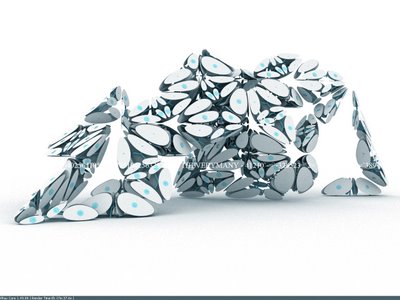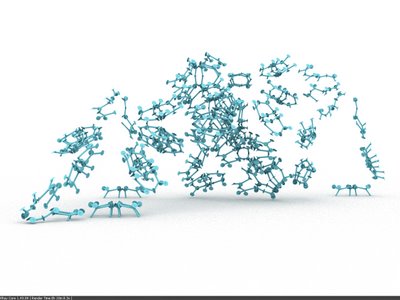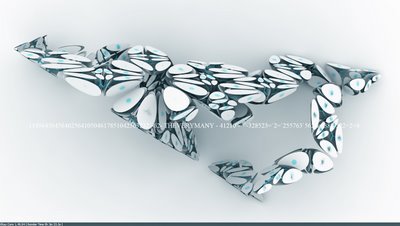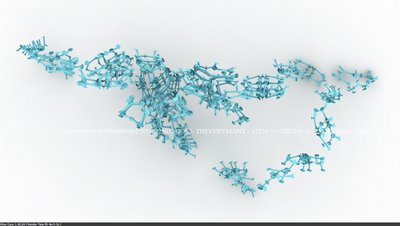071107_Aperiodic_Series001

Here is finally the second post on a series of tests done on 3d aperiodic pattern - here based on a Danzer tiling assembly - the other different types of outputs will be posted as a following series of post...

APERIODIC TILING (http://en.wikipedia.org/wiki/Aperiodic_tiling):
A given set of tiles, in the Euclidean plane or some other geometric setting, admits a tiling if non-overlapping copies of the tiles in the set can be fitted together to cover the entire space. A given set of tiles might admit periodic tilings, tilings that remain invariant after being shifted by a translation. (For example, a lattice of square tiles is periodic.) It is not difficult to design a set of tiles that admits non-periodic tilings as well (For example, randomly arranged tilings using a 2x2 square and 2x1 rectangle will typically be non-periodic.) An aperiodic set of tiles however, admits only non-periodic tilings, an altogether more subtle phenomenon.
DANZER TILING (http://www.cs.williams.edu/~98bcc/tiling/index.html):
There are 22 vertex configurations which occur in an infinite (global) Danzer tiling produced by inflating an initial finite patch an infinite number of times. Danzer says in his paper that there are 27 vertex configurations total, but says nothing about the characteristics of the five configurations which do not appear in a global tiling. We have identified a total of 174 vertex configurations by exhaustive search. At present we are unsure whether Danzer's remark is an error or whether some 5 of these are special in some way.


Acknowledgment: I can't pretend taking much credits in the field of aperiodic pattern in architecture as yet somehow in the direct line of people such as Daniel Bozia, Aranda/Lasch, K. Steinfeld and many others who posted on the web explicit and illustrated information on the subject which helped me to figured it out...
Labels: aperiodic tiling, architecture, danzer tiling, rhinoscript


<< Home